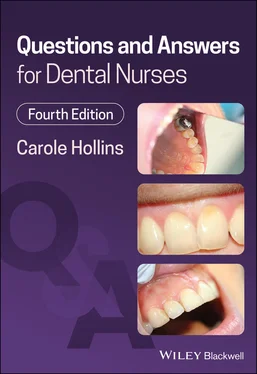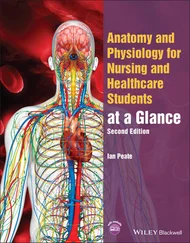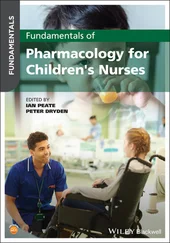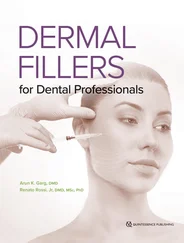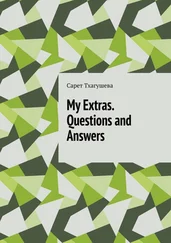Carole Hollins - Questions and Answers for Dental Nurses
Здесь есть возможность читать онлайн «Carole Hollins - Questions and Answers for Dental Nurses» — ознакомительный отрывок электронной книги совершенно бесплатно, а после прочтения отрывка купить полную версию. В некоторых случаях можно слушать аудио, скачать через торрент в формате fb2 и присутствует краткое содержание. Жанр: unrecognised, на английском языке. Описание произведения, (предисловие) а так же отзывы посетителей доступны на портале библиотеки ЛибКат.
- Название:Questions and Answers for Dental Nurses
- Автор:
- Жанр:
- Год:неизвестен
- ISBN:нет данных
- Рейтинг книги:5 / 5. Голосов: 1
-
Избранное:Добавить в избранное
- Отзывы:
-
Ваша оценка:
- 100
- 1
- 2
- 3
- 4
- 5
Questions and Answers for Dental Nurses: краткое содержание, описание и аннотация
Предлагаем к чтению аннотацию, описание, краткое содержание или предисловие (зависит от того, что написал сам автор книги «Questions and Answers for Dental Nurses»). Если вы не нашли необходимую информацию о книге — напишите в комментариях, мы постараемся отыскать её.
An essential study aid for dental nursing students preparing for the NEBDN exam Questions and Answers for Dental Nurses
Questions and Answers for Dental Nurses 4th Edition
Questions and Answers for Dental Nurses — читать онлайн ознакомительный отрывок
Ниже представлен текст книги, разбитый по страницам. Система сохранения места последней прочитанной страницы, позволяет с удобством читать онлайн бесплатно книгу «Questions and Answers for Dental Nurses», без необходимости каждый раз заново искать на чём Вы остановились. Поставьте закладку, и сможете в любой момент перейти на страницу, на которой закончили чтение.
Интервал:
Закладка:
The option list will usually contain a minimum of eight options.
The options are always homologous – of the same form (so all surgical instruments, all restorative materials and so on).
The options are always set out alphabetically or numerically in ascending order (so from a) to b) or from lowest to highest number).
The questions are set out as several sentences that describe a detailed scenario.
They are designed to test the candidate’s analytical and reasoning skills, as well as requiring a more detailed and concise application of their knowledge.
Key words or phrases are not highlighted.
Each topical option list is accompanied by a question set, rather than a single question.
The candidates must read the lead‐in statement carefully for each question set, as this gives the information required to match an answer to each question correctly. So, are they matching an appropriate emergency drug to a medical emergency scenario, or an appropriate oral hygiene item to an oral health assessment scenario, or an appropriate instrument to set out for a restorative procedure and so on. Also, the lead‐in statement will state whether just one or more than one answer may be required for questions within that set – obviously if the wrong number is given by the candidate, the answer will be rejected. Where multiple matched answers are to be given, each question will state the number required.
Again, the alphabetical or numerical order of the option list will prevent the candidates from attempting to guess a likely answer by believing, for example, that option e) has not been used previously and so choose it. The lead‐in statement for EMQs will always state that ‘each option might be used once, more than once or not at all’. Candidates are required to mark their answers as a pencilled horizontal line on an optical marking sheet, as detailed above in the section on MCQs.
With EMQs, candidates are required to first understand the question scenario as it is described, then apply detailed knowledge of the topic to the scenario so that they can reason out and match the answer(s) from the option list.
Below are several examples of extended matching questions and answers showing the various formats discussed.
Topic: Head and neck anatomy
For each of the following head and neck anatomy questions, select the single most appropriate answer from the option list. Each option might be used once, more than once or not at all.
1 External carotid artery
2 Glossopharyngeal nerve
3 Internal carotid artery
4 Long buccal nerve
5 Medial pterygoid
6 Occipital bone
7 Temporal bone
8 Temporalis
9 Trigeminal nerve
1 The muscles of mastication are those running between the skull and the mandible that are responsible for closing the mouth and chewing movements. Which one of the options listed is the muscle of mastication that has a point of insertion on the coronoid process of the mandible and acts to pull this jaw backwards and closed?
The correct answer is h). Temporalis runs from the temporal bone on the side of the head, under the zygomatic arch and inserts onto the coronoid process. It can be seen bulging in the temple region when the teeth are clenched together.
1 The nerve supply to the head is extensive and supplied by the 12 pairs of cranial nerves, which leave the brain directly through the base of the skull to innervate the area. Which one of the options listed is the name of the fifth cranial nerve that supplies the majority of structures in the oral cavity?
The correct answer is i). The trigeminal nerve is the cranial nerve of most importance to the dental team, and it splits into three divisions: the ophthalmic, the maxillary and the mandibular. The mandibular division is a combination nerve as it carries both sensory and motor components.
1 The major arteries carrying oxygenated blood to the head and neck region are the common carotid arteries, which are direct branches from the arch of the aorta as it leaves the left ventricle. Which one of the options listed is the branch of the common carotid artery that supplies this oxygenated blood to the face and oral cavity?
The correct answer is a). The common carotid artery divides into two branches in the upper neck area; the external carotid artery, which runs outside the cranium and supplies the face and oral cavity, and the internal carotid artery, which passes into the brain and supplies it and some of the sensory organs, such as the eyes.
Topic: Medical emergencies – drugs and equipment
For each of the following medical emergency questions, select the single most appropriate answer from the option list. Each option might be used once, more than once or not at all.
1 Adrenaline
2 AED
3 Aspirin
4 Blood glucose monitor
5 Glucagon
6 Glucogel
7 Glyceryl trinitrate
8 Midazolam buccal
9 Needle and syringe
10 OP airway
11 Oxygen
12 Pocket face mask
13 Portable suction device
14 Pulse oximeter
15 Salbutamol
16 Sphygmomanometer
1 A collapsed patient is found in the waiting room of the dental practice by a staff member, and the alarm is raised. On checking the patient’s airway, the dentist discovers the casualty’s mouth contains vomit. Which one of the options listed is the item most likely to be required to immediately aid the casualty?
The correct answer is m). As the patient is located in the waiting area the mains operated surgery suction unit cannot be utilised to clear the vomit. A portable suction device is emergency equipment that should be held by all dental workplaces and is best kept with the emergency drugs kit in a centralised area of the workplace, with appropriate signage displayed for easy location.
1 Following a scale and polish procedure, a patient begins to feel unwell and complains of pains in his chest and arm. On checking his medical history record on the computer, he is found to suffer from angina and is given oxygen using a pocket face mask system. Which one of the options listed is the other item most likely to be required to assist the casualty?
The correct answer is g). Glyceryl trinitrate (GTN) spray should be held in the emergency drugs kit and should be administered to any patient suspected of having an angina attack. Patients usually carry their own supply, but that of the workplace will be in date, a full container and easily located so is best used in an emergency situation. It is sprayed under the casualty’s tongue where the thin mucous membrane allows the active drug to be rapidly absorbed into the blood stream and carried to the heart. The spray can be administered several times to ease the angina symptoms, but repeat applications may indicate the casualty is veering towards a cardiac arrest.
1 A known epileptic patient has attended the practice for dental treatment but becomes unwell while having radiographs taken. The staff believe the audible alarm of the machine has triggered a seizure, and the patient continues fitting for more than 5 minutes. Which one of the options listed is the item most likely to be required to assist the casualty?
The correct answer is h). A prolonged seizure (5 minutes plus) or repeat seizures occurring without the casualty regaining consciousness indicate status epilepticus – a very serious medical emergency that requires professional support for the dental team. While awaiting paramedics, midazolam buccal gel should be administered into the buccal sulcus of the casualty by the rescuer, where it will be rapidly absorbed into the blood stream. Use the buccal sulcus closest to the floor (with the casualty lying on their side) so that the gel does not trickle into their oropharynx and cause choking.
Читать дальшеИнтервал:
Закладка:
Похожие книги на «Questions and Answers for Dental Nurses»
Представляем Вашему вниманию похожие книги на «Questions and Answers for Dental Nurses» списком для выбора. Мы отобрали схожую по названию и смыслу литературу в надежде предоставить читателям больше вариантов отыскать новые, интересные, ещё непрочитанные произведения.
Обсуждение, отзывы о книге «Questions and Answers for Dental Nurses» и просто собственные мнения читателей. Оставьте ваши комментарии, напишите, что Вы думаете о произведении, его смысле или главных героях. Укажите что конкретно понравилось, а что нет, и почему Вы так считаете.
